Seismological Society of America > News
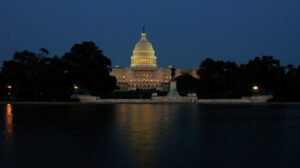
25 June 2025—The Society continues to maintain a close connection with U.S. policymakers on Capitol Hill, stressing the important role of seismological research in addressing national challenges and encouraging federal support of science-driven policies. The Society’s latest advocacy efforts for our science include these calls for the reauthorization and full … Continue Reading »
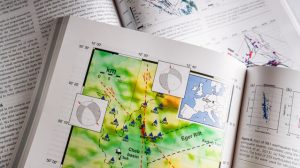
19 June 2025— The peer-reviewed journals of the Seismological Society of America remain at the forefront of seismological research thanks to our authors, members, editorial boards, reviewers and readers. SSA is pleased to announce this year’s impact factors according to the Clarivate Analytics 2025 Journal Citation Reports (JCR). The 2025 … Continue Reading »
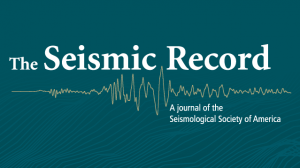
19 June 2025—The Seismological Society of America (SSA)’s journal The Seismic Record is now included in Clarivate’s Web of Science™ (WoS) in its Emerging Sources Citation Index (ESCI). The journal was included in WoS after meeting a set of 28 criteria that measure editorial rigor and publication best practices, and … Continue Reading »

16 June 2025— Earlier this year, PhD student Yitang Cai presented their research at the General Assembly of the European Geosciences Union in Vienna, Austria (EGU25). Their SSA Global Travel Grant “meant a lot,” they said because it enabled them to participate in the conference and forge new connections with … Continue Reading »
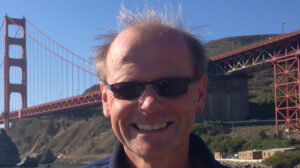
16 June 2025— Roland Bürgmann, professor at the University of California, Berkeley Department of Earth and Planetary Science and the Berkeley Seismological Laboratory and head of the Active Tectonics group at UC Berkeley, will deliver the opening keynote at SSA’s Environmental Seismology meeting. SSA spoke with him to hear more … Continue Reading »
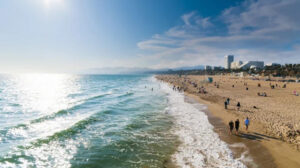
11 June 2025—The SSA Annual Meeting returns to its California roots next year as we celebrate the 120th anniversary of the Society. The 14-18 April 2026 conference in Pasadena offers a chance for the global seismology community to come together for what many past attendees have called the most essential … Continue Reading »
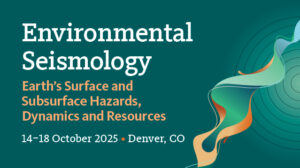
Two student members will participate in the 2025 Environmental Seismology Conference with the aid of travel grants made possible by generous donations from the community to the General Fund. Congratulations to: Taylor Kenyon, University of Waterloo, US National Park Service Samara Omar, Colorado School of Mines We congratulate these … Continue Reading »
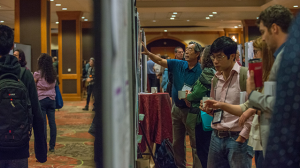
16 May 2025—In an ongoing effort to support and promote the outstanding work of SSA student members, the Society is pleased to present 12 students with a 2025 Student Presentation Award. The SSA awards program seeks to highlight excellent student presentations (poster or oral) at the SSA Annual Meeting. Each … Continue Reading »
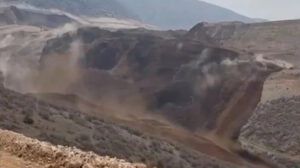
8 May 2025—A new analysis of a fatal landslide that occurred on 13 February 2024 at the Çöpler Gold Mine in Türkiye reveals that the site of the landslide had been slowly moving for at least four years prior to the failure. “Additionally, our analyses detected deformation anomalies in other … Continue Reading »

5 May 2025—One of the reasons that Samantha Hansen serves as a reviewer for The Seismic Record is “to get a first look at projects being completed by our peers and colleagues,” she said. “This is not only very interesting, but it can also give you a better understanding of … Continue Reading »
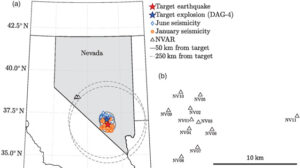
24 April 2025—Could the seismic signal of an underground nuclear test explosion be “hidden” by the signal generated by a natural earthquake? It’s possible, according to a new review article published in the Bulletin of the Seismological Society of America that contradicts the conventional wisdom about explosion “masking.” The new … Continue Reading »
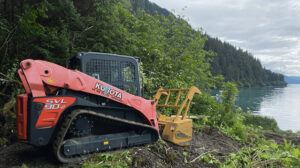
17 April 2025—Researchers from Los Alamos National Laboratory have been collecting seismic data from a submarine telecommunications fiber optic cable in coastal Alaska, exploring how the cable could be used to detect signals from earthquakes, ocean currents and marine mammals. Then the researchers learned about construction on an oil spill … Continue Reading »
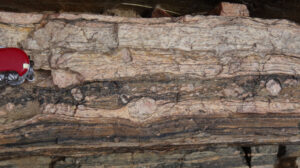
17 April 2025—At the Seismological Society of America’s Annual Meeting, researchers posed a seemingly simple question: how wide are faults? Using data compiled from single earthquakes across the world, Christie Rowe of the Nevada Seismological Laboratory at the University of Nevada, Reno and Alex Hatem of the U.S. Geological Survey … Continue Reading »
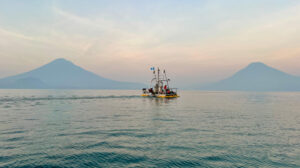
17 April 2025— Sediment cores drawn from four lakes in Guatemala record the distinct direction that ground shaking traveled during a 1976 magnitude 7.5 earthquake that devastated the country, according to researchers at the Seismological Society of America’s Annual Meeting. The earthquake, which killed more than 23,000 people and left … Continue Reading »
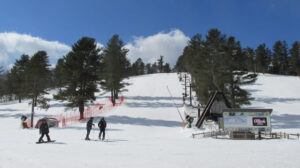
17 April 2025—In 1638, an earthquake in what is now New Hampshire had Plymouth, Massachusetts colonists stumbling from the strong shaking and water sloshing out of the pots used by Native Americans to cook a midday meal along the St. Lawrence River, according to contemporaneous reports. When Roger Williams, founder … Continue Reading »

17 April 2025—You’ve probably seen the posts while scrolling on your phone: a shaky TikTok showing shelves emptying and lights swaying inside a convenience store, or a WHAT WAS THAT?? tweet that captures an earthquake in progress. Researchers now show that Google’s large language model (LLM) Gemini can comb through … Continue Reading »
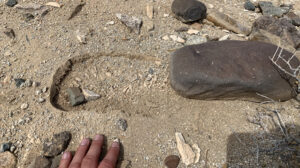
16 April 2025—When Julian Lozos visited the site of the 2019 Ridgecrest earthquakes two days after the event, he noticed something strange. Pebble- to boulder-sized rocks clearly had been moved by the earthquakes—but there were no signs of dragging or shearing on the desert ground. He wasn’t the only one … Continue Reading »

16 April 2025—Researchers are combining data on earthquake shaking intensity, crowdsourced traffic data from the Waze navigation app and police crash reports to find out if car crashes are more likely during seismic events. So far, the data are too sparse to draw much of a broad conclusion, although the … Continue Reading »
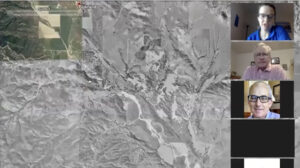
16 April 2025—In places where earthquakes rupture the Earth’s surface, scientists often try to predict the location of these future fault ruptures based on the geological fault traces created in past earthquakes. But how accurate are these fault traces in predicting the next rupture location? At the Seismological Society of … Continue Reading »

15 April 2025—Fiber optic cable deployed on a Swiss glacier detected the seismic signals of crevasses opening in the ice, confirming that the technology could be useful in monitoring such icequakes, according to a report at the Seismological Society of America’s Annual Meeting. Crevassing is important to the stability of … Continue Reading »
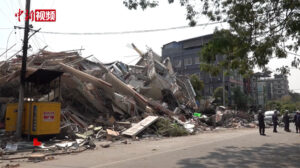
15 April 2025—The 28 March magnitude 7.7 Mandalay, Burma (Myanmar) earthquake caused widespread and severe damage in Myanmar and neighboring countries such as Thailand, with more than 5,000 casualties now confirmed. At the Seismological Society of America’s Annual Meeting, researchers from around the globe shared early insights into the earthquake’s … Continue Reading »
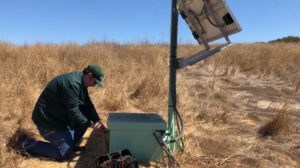
9 April 2025— Plane crashes are thankfully rare, but when they happen, investigators rely on the airplane’s “black box” for data to explain what happened and how to prevent it in the future. Seismic instruments deployed to gather strong motion data are kind of like those black boxes, said Keith … Continue Reading »
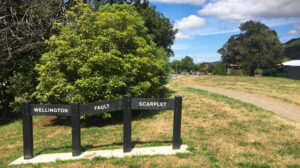
1 April 2025—More than half of the earthquakes sampled at the subduction interface at the southern Hikurangi margin in Aotearoa-New Zealand cluster in time with earthquakes on three upper plate faults, according to a new analysis. The study published in the Bulletin of the Seismological Society of America will help … Continue Reading »
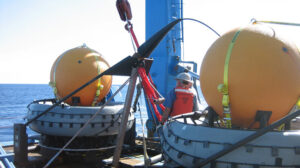
27 March 2025—Hydroacoustic signals captured by the world’s international nuclear monitoring system suggest an underwater landslide may have broken communications cables and disrupted internet traffic in west African countries for several weeks in March 2024. Researchers used data collected by hydrophones installed by the International Monitoring System of the Comprehensive … Continue Reading »
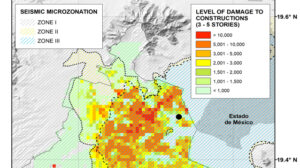
11 March 2025– A recent swarm of small shallow earthquakes in Mexico City in 2019 and 2023 caused surprisingly strong ground shaking, prompting researchers to wonder how shaking from a moderate sized earthquake might impact buildings across the city. In the Bulletin of the Seismological Society of America, Miguel Jaimes and … Continue Reading »
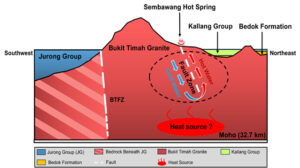
5 March 2025 — A new seismic study of Singapore could guide urban growth and renewable energy development in the coastal city nation, where 5.6 million residents live within an area of 734 square kilometers. The study, published in Seismological Research Letters, identifies areas with increased risk of ground shaking and … Continue Reading »
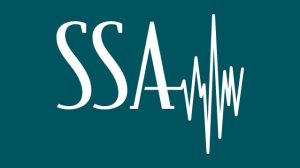
A joint statement by SSA President Heather DeShon and President-Elect Susan Bilek 15 February 2025 — The recent termination of thousands of federal employees, including employees within the U.S. Department of the Interior, Department of Energy and Department of Commerce, will undermine the critical scientific expertise required to keep the … Continue Reading »
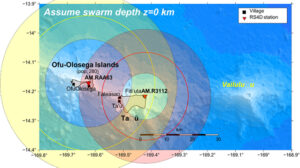
14 February 2025 — In late July to October 2022, residents of the Manu’a Islands in American Samoa felt the earth shake several times a day, raising concerns of an imminent volcanic eruption or tsunami. An earthquake catalog for the area turned up nothing, because the islands lacked a seismic … Continue Reading »

February 13—The Seismological Society of America held its Board of Directors election on Friday, 3 January 2025. The following members were elected to a three-year term beginning 14 April 2025 at the SSA Annual Meeting in Baltimore, Maryland. Ashly Cabas, Associate Professor, Department of Civil, Construction, and Environmental Engineering … Continue Reading »
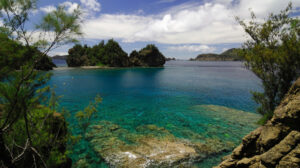
22 January 2025—The magnitude 7.9 Bonin Islands earthquake sequence, which ruptured deep within the earth near the base of the upper mantle, did not include an aftershock that extended to record depths into the lower mantle, according to a study in The Seismic Record. When Hao Zhang of the University … Continue Reading »
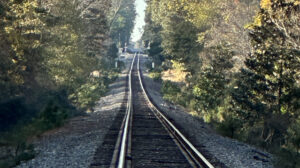
22 January 2025—Gather around, and let Susan Hough tell you the tale of the Summerville Light. Legend has it that the strange orb sometimes seen hovering over the railroad tracks in the remote area around Summerville, South Carolina is a lantern borne by a ghost whose husband lost his head … Continue Reading »
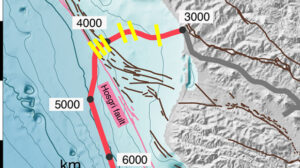
10 January 2025—Using an existing telecommunications fiber optic cable running along the sea floor, researchers identified faults and tracked the locations of whales traveling up and down the central California coast. Their study, published in Seismological Research Letters, demonstrates the potential of distributed acoustic sensing (DAS) for visualizing the geohazards … Continue Reading »

24 December 2024–The rapid, decade-long depletion of groundwater in Morocco’s Haouz plain may have affected the accumulation of tectonic stress that led to the deadly 8 September 2023 magnitude 6.8 Al Haouz earthquake, according to a new study published in the Bulletin of the Seismological Society of America. Bhaskar Kundu … Continue Reading »

11 December 2024–Military vehicles rumbling toward the presidential palace, bombs dropped by the Chilean Air Force, and an eerie quiet descending over Santiago after a curfew imposed by a military junta—a lone seismometer captured all these features of the 1973 Chilean coup d’état. In Seismological Research Letters, Sergio León-Rios of … Continue Reading »

13 November 2024–Wastewater injection resulting from oil and gas production in Oklahoma caused a dramatic rise in seismic activity in the state between 2009 and 2015. But regulatory efforts to backfill some injection wells with cement and reduce injection volumes have been effective in lowering the state’s induced earthquake rate, … Continue Reading »
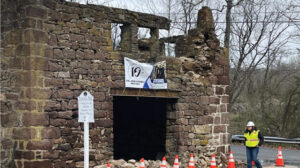
1 October 2024–The magnitude 4.8 Tewksbury earthquake surprised millions of people on the U.S. East Coast who felt the shaking from this largest instrumentally recorded earthquake in New Jersey since 1900. But researchers noted something else unusual about the earthquake: why did so many people 40 miles away in New … Continue Reading »
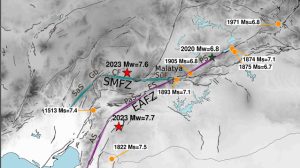
25 September 2024–The five largest continental transform earthquakes since 2000 all originated on a branch of the main fault—and two researchers predict that the next great earthquake of this type will also get its start on a branch or splay fault. Last year’s magnitude 7.8 Pazarcık earthquake in Türkiye was … Continue Reading »
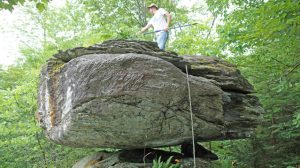
10 September 2024–Five boulders, delivered by glacier and balancing delicately on rocky pedestals in northern New York and Vermont, can help define long-term maximum shaking intensity of earthquakes in the region. Seismologists examine the fragility of precariously balanced rocks, or PBRs, to determine the intensity of shaking would be needed … Continue Reading »

29 August 2024–About 21 million years ago the Yap Trench collided with a thick piece of ocean crust called the Caroline Plateau. But is the Yap Trench still an active subduction zone? And why does the Yap Trench look a little different from its subduction zone neighbors in the western … Continue Reading »
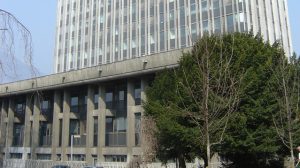
15 August 2024–Data recorded by seismic instrumentation in buildings where ground motion is weak to moderate can help engineers better understand structural responses to earthquakes, according to a new paper published in the Bulletin of the Seismological Society of America. Philippe Guéguen and Ariana Astorga at Université Grenoble Alpes – … Continue Reading »
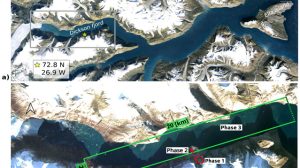
8 August 2024–In September 2023, a megatsunami in remote eastern Greenland sent seismic waves around the world, piquing the interest of the global research community. The event created a week-long oscillating wave in Dickson Fjord, according to a new report in The Seismic Record. Angela Carrillo-Ponce of GFZ German Research … Continue Reading »
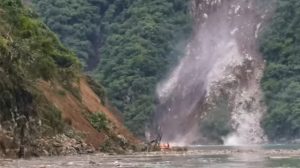
7 August 2024–Using data collected from a 2022 magnitude 6.8 earthquake in Luding County in China’s Sichuan Province, researchers tested whether Global Navigation Satellite System (GNSS) observations could be used for rapid prediction of earthquake-triggered landslides. In their report in Seismological Research Letters, Kejie Chen of the Southern University of … Continue Reading »
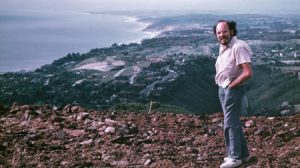
05 August 2024 –A $10,000 gift from Paul Andrew Spudich’s sister, Suzanne, to the Paul Andrew Spudich Fund has expanded its travel grant offerings for early-career and student members. Providing the biggest boost to the fund since its 2023 launch, the new gift will help SSA reach its goal of … Continue Reading »

SSA’s newest grant program sends early-career member to Osaka, Japan Chunyang Ji, a postdoctoral scholar at North Carolina State University whose research focuses on the modeling and assessment of high-frequency ground motions, is the first SSA member to participate in a seismological meeting with the aid of a Paul Andrew … Continue Reading »

8 May 2024–Pore pressure diffusion generated by carbon dioxide injected underground at a carbon storage site in the Illinois Basin is the likely cause of hundreds of microearthquakes that took place at the site between 2011 and 2012, according to a new analysis. The modeling study published in the Bulletin … Continue Reading »
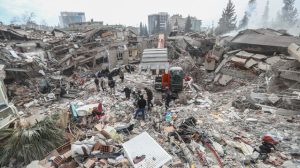
3 May 2024–About six months before the 2023 Mw 7.8 Kahramanmaraş earthquake in Türkiye, transient short pulses of low-frequency seismic activity were occurring on the east side of the East Anatolian Fault Zone, researchers reported at SSA’s 2024 Annual Meeting. Learning more about the properties and physical origins of these … Continue Reading »
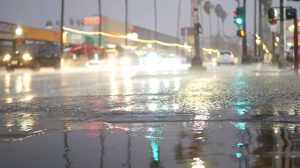
3 May 2024–Record-setting storms in 2023 filled California’s major reservoirs to the brim, providing some relief in a decades-long drought, but how much of that record rain trickled underground? Shujuan Mao of Stanford University and her colleagues used a surprising technique to answer this question for the greater Los Angeles … Continue Reading »
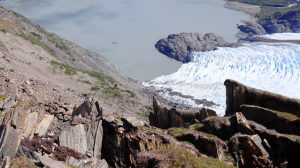
2 May 2024–The names might not be familiar—Cowee Creek, Brabazon Range, Upper Pederson Lagoon—but they mark the sites of recent lake tsunamis, a phenomenon that is increasingly common in Alaska, British Columbia and other regions with mountain glaciers. Triggered by landslides into small bodies of water, most of these tsunamis … Continue Reading »
![[caption id="attachment_41055" align="aligncenter" width="640"] The Physics Experiment 1-A field team outside the entrance to P-tunnel at Nevada National Security Site. | LLNL[/caption]](https://www.seismosoc.org/wp-content/uploads/2024/04/Myers-640x358px-300x168.jpg)
2 May 2024–On an October morning in 2023, a chemical explosion detonated in a tunnel under the Nevada desert was the launch of the next set of experiments by the National Nuclear Security Administration, with the goal to improve detection of low-yield nuclear explosions around the world. Physics Experiment 1-A … Continue Reading »
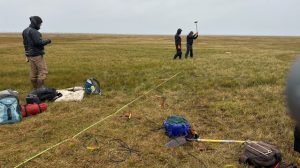
2 May 2024–Permafrost in Utqiaġvik, Alaska, differs from place to place under the surface, ranging from ice rich zones to unfrozen layers in both undisturbed and disturbed tundra, according to a new report discussed at the Seismological Society of America (SSA)’s 2024 Annual Meeting. Using multiple geophysical techniques to explore … Continue Reading »
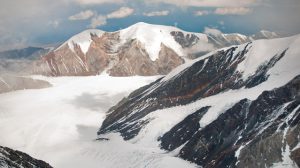
2 May 2024–A recent study of the crust below south-central Alaska, across the Denali Fault, suggests there may be a reservoir of magma located below the enigmatic Denali Volcanic Gap, researchers reported at the Seismological Society of America (SSA)’s 2024 Annual Meeting. The Denali Volcanic Gap (DVG) is the roughly … Continue Reading »
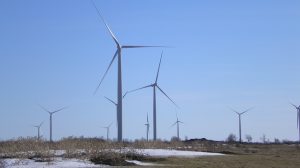
2 May 2024–As wind power becomes a widespread and cost-effective renewable energy source at sites throughout the world, researchers are focusing on the propagation of seismic and acoustic waves that wind-harnessing turbines produce. At the Seismological Society of America (SSA)’s 2024 Annual Meeting, researchers presented simulations of turbine-driven wave propagation … Continue Reading »
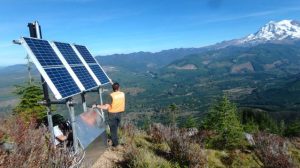
2 May 2024–In the shadow of Washington State’s Mount Rainier, about 90,000 people live in the path of a potential large lahar—a destructive, fluid and fast-moving debris flow associated with volcanic slopes. At the Seismological Society of America (SSA)’s 2024 Annual Meeting, U.S. Geological Survey volcano seismologist Seth Moran described … Continue Reading »
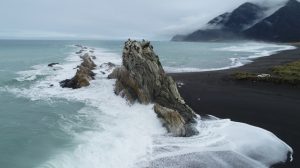
1 May 2024–Friction along a fault during an earthquake can sometimes generate a rise in temperatures high enough to produce a signal in the organic and mineral material contained within the fault’s rocks. At the Seismological Society of America (SSA)’s 2024 Annual Meeting, Genevieve Coffey of GNS Science discussed how … Continue Reading »

1 May 2024–Tiny seismic signals captured around the globe can be used to build a picture of the Earth’s inner core, its fabric made up of differences in the size, shape and orientation of iron grains. This glimpse at the inner core also offers a window into the evolution of … Continue Reading »
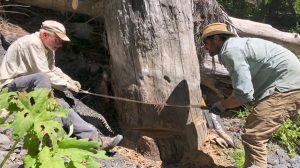
1 May 2024–Trees caught up in two prehistoric, devastating landslides in the Coast Ranges of northern California suggest that the landslides could be linked to major earthquakes, including the magnitude 7.9 1906 San Francisco earthquake, researchers said at the Seismological Society of America (SSA)’s 2024 Annual Meeting. In the Mule … Continue Reading »
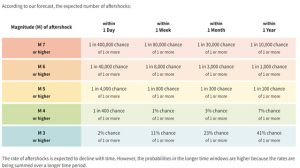
1 May 2024–When a magnitude 5+ earthquake occurs in the United States, the U.S. Geological Survey makes a variety of aftershock forecast communication products available to the public. But is there an ethical responsibility to make aftershock products more widely available to people affected by earthquakes in other countries? In … Continue Reading »
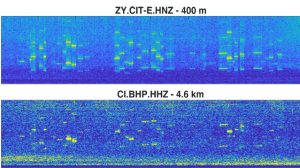
13 March 2024–Seattle may have experienced its own Swift Quake last July, but at an August 2023 concert Taylor Swift’s fans in Los Angeles gave scientists a lot of shaking to ponder. After some debate, a research team led by Gabrielle Tepp of Caltech concluded that it was likely the … Continue Reading »
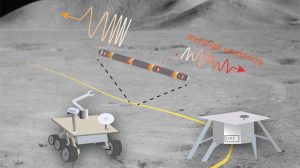
28 February 2024–An increasing number of seismologists are using fiber optic cables to detect seismic waves on Earth—but how would this technology fare on the Moon, and what would it tell us about the deep layers of our nearest neighbor in space? In Seismological Research Letters, Wenbo Wu of Woods … Continue Reading »
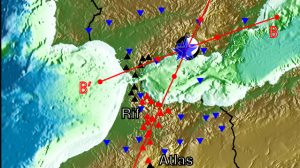
21 February 2024–Strange seismic wave arrivals from a 2010 earthquake under Spain were the clues that led to an unexpected discovery beneath the western Mediterranean: a subducted oceanic slab that has completely overturned. The waveforms paint a picture of a slab that descended rapidly into the Earth’s mantle and flipped … Continue Reading »
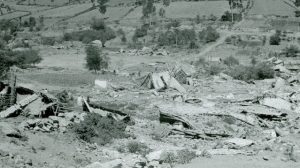
15 February 2024–A new measure that compares earthquake-related fatalities to a country’s population size concludes that Ecuador, Lebanon, Haiti, Turkmenistan, Iran and Portugal have experienced the greatest impact from fatalities in the past five centuries. The new impact measure, introduced in the Bulletin of the Seismological Society of America by … Continue Reading »

18 January 2024—Through the work of our Government Relations Committee, SSA is supporting the Congressional reauthorization of the National Earthquake Hazards Reduction Program (NEHRP), through bipartisan legislation introduced today by U.S. Senators Alex Padilla (D-Calif.) and Lisa Murkowski (R-Alaska). NEHRP is the federal government’s coordinated long-term nationwide program to reduce … Continue Reading »
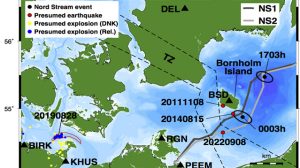
3 January 2024–Seismic events that coincided with sudden drops in pressure within the Nord Stream 1 and 2 natural gas pipelines in September 2022 alerted the world to the rupture of pipelines in the western Baltic Sea. The suspected act of sabotage, which reportedly used explosive charges to rupture the … Continue Reading »
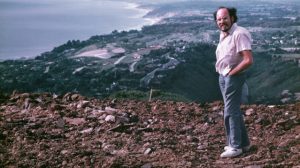
18 September 2023–A new fund at SSA honors the life and accomplishments of Paul Andrew Spudich (1950-2019) by supporting the professional development of Society members at the beginning of their careers in seismology. Through The Paul Andrew Spudich Fund, SSA will establish the Paul Andrew Spudich Travel Grant program, which … Continue Reading »

The Seismological Society of America held its Board of Directors election on Friday, 6 January 2023. The following members were elected to a three-year term beginning 17 April 2023 at the SSA Annual Meeting in Puerto Rico: Annemarie Baltay, research geophysicist, U.S. Geological Survey Principal fields: observational earthquake seismology, … Continue Reading »
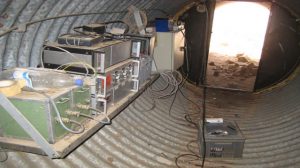
9 June 2022–In April, the Seismological Society of America (SSA) and the American Geophysical Union (AGU) agreed on minor updates to their position statement, “The Capability to Monitor the Comprehensive Nuclear Test-Ban Treaty (CTBT) Should be Expanded, Completed, and Sustained.” The CTBT is an international agreement to ban all nuclear … Continue Reading »

The generosity of Clarence Allen (1925-2021), SSA’s 41st president, will bring career-changing opportunities to countless scientists in our community. The Seismological Society of America (SSA) announced today that it has received a gift of nearly $1.6 million, a bequest from the estate of renowned seismologist Clarence Allen. The gift from … Continue Reading »

[The election has now closed.] Why Vote? SSA Board of Directors 2022 Election How can SSA best serve its members and meet its mission? I encourage you to ask yourself these questions as you prepare to participate in the 2022 Board of Directors Election. This is your opportunity to select … Continue Reading »

16 June 2021–The Seismological Society of America (SSA) announced today the appointment of P. Martin Mai as editor-in-chief of the Bulletin of the Seismological Society of America (BSSA). Mai is a professor of geophysics in the Earth Science and Engineering program of the Physical Sciences and Engineering Division at KAUST. … Continue Reading »

23 April 2021–Peggy Hellweg, operations manager for the Berkeley Seismological Laboratory (BSL) at the University of California, Berkeley, was elected president-elect by the Board of the Seismological Society of America on 14 April. Hellweg previously served as SSA Secretary and co-chaired the 100th Anniversary Earthquake Conference, SSA’s joint meeting with … Continue Reading »

14 January 2021–SSA announced the election results from the 8 January 2021 election, conducted by YesElections, formerly known as Election America.
Three new members will join the board for three-year terms, and one board member was re-elected to a second term:
Karen Fischer, Brown University
Zhigang Peng, Georgia Tech University
Xyoli Pérez-Campos, Universidad Nacional Autónoma de México
Carl Tape, University of Alaska Fairbanks … Continue Reading »

Dear SSA Community: As a Society, we seek to do all we can to make science accessible to all. That goal has inspired a new task force to address diversity and inclusion within our community. Chaired by Aaron Velasco, professor of geological sciences and computational sciences at the University of … Continue Reading »
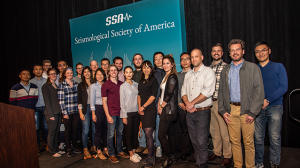
FROM BILL WALTER, PRESIDENT OF SSA 9 July 2020 — Seismology is a global endeavor, and the international scientific community benefits from a free exchange of people as well as ideas. The Administration’s recent proposal to limit participation by international students in US degree programs would be tragic, both for … Continue Reading »
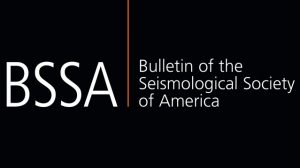
7 July 2020 – Today the Seismological Society of America announced its search for the next Editor-in-Chief (EIC) of Bulletin of the Seismological Society of America (BSSA), its flagship, peer-reviewed international journal. The journal is key to the Society meeting its core mission to advance earthquake science worldwide and to … Continue Reading »

I write you as the president of SSA, a global society of Earth scientists that values the diversity of voices and backgrounds in our community. Along with the rest of the SSA leadership, I am disturbed and disheartened by the senseless killing of George Floyd in Minneapolis. Recent racist events … Continue Reading »
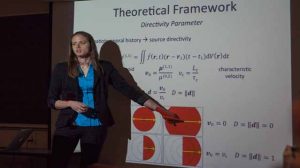
20 November 2019–The terms may seem interchangeable to a layperson, but “hazard” and “risk” mean very different things in earthquake science. A seismic hazard is a natural phenomenon such as the level of ground shaking caused by an earthquake. Seismic risk, on the other hand, refers to the probability that … Continue Reading »
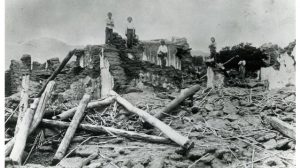
23 October 2019–Although he grew up in Switzerland and received his Ph.D. at the University of Basel, much of Max Suter’s career has been centered on Mexico. From the Trans-Mexican Volcanic Belt in central Mexico to the Basin and Range province of northwestern Mexico, his research has identified and characterized … Continue Reading »
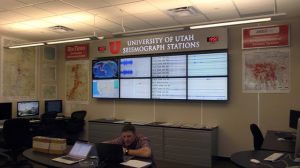
2 October 2019–The International Monitoring System is the top global seismic network for monitoring nuclear weapon tests around the world. To expand the system’s detection capabilities, however, international monitors should seek out the data, methods and expertise of smaller regional seismic networks. In a paper published as part of an … Continue Reading »
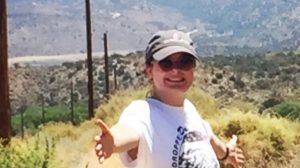
16 September 2019–Earthquake faults have short memories—or at least, that’s what the traditional earthquake cycle model suggests. Based on the elastic rebound theory proposed by Harry Fielding Reid after the 1906 San Francisco earthquake, the traditional model assumes that each earthquake in an area occurs independently of one another, and … Continue Reading »
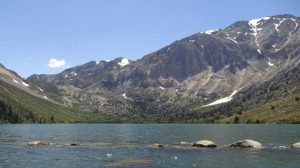
SSA announces the 2020 election to select four new members to serve three-year terms on the Board of Directors. The seven candidates and their statements are presented below, in alphabetical order by last name; in order by last name, these candidates are Annemarie Baltay, Susan Bilek, Matthew Gerstenberger, Hiroshi Kawase, … Continue Reading »
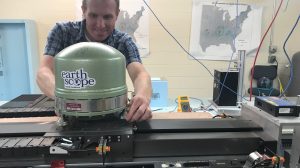
15 August 2019–Seismic networks depend on good instrumentation. But testing sensitive seismic instruments to make sure they’re working right can be a challenge, as Adam Ringler, a physical scientist with the U.S. Geological Survey, knows well. “Seismometers aren’t only sensitive to ground motion, which you want, they’re also sensitive to … Continue Reading »
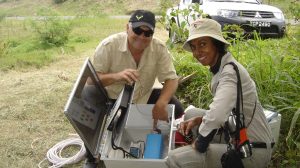
15 July 2019 –Joan Latchman, a seismologist at The University of the West Indies Seismic Research Centre, was born in Trinidad and Tobago and grew up just a 15-minute walk from the Centre – then known as the Seismic Research Unit. At the time, the Centre had a low profile, … Continue Reading »
The Seismological Society of America held its Board of Directors election on Friday, 4 January 2019. The following nominees for Director were elected to a three-year term beginning in April 2019 at the SSA Annual Meeting in Seattle: Heather DeShon, Associate Professor, Southern Methodist University Heather DeShon’s principal fields of … Continue Reading »
SSA announces the candidates for the 2019 election to add four members to the Board of Directors. The nominating committee, chaired by Jim Mori, confirmed a slate of six individuals to run for office. The committee included: Jim Mori (Kyoto University) Rachel Abercrombie (Boston University) Gail Atkinson (Western University) Ken … Continue Reading »
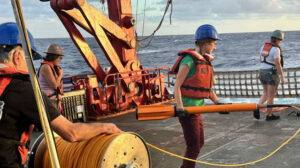
16 June 2025—If plate tectonics are canon in the Earth sciences, the details of what makes up a “plate” are surprisingly tricky, says Hannah Mark. “The definition of a plate is a section of the outermost solid layer of the Earth that behaves as a rigid body, and deforms only … Continue Reading »
















































![[caption id="attachment_41055" align="aligncenter" width="640"] The Physics Experiment 1-A field team outside the entrance to P-tunnel at Nevada National Security Site. | LLNL[/caption]](https://www.seismosoc.org/wp-content/uploads/2024/04/Myers-640x358px-300x168.jpg)




























